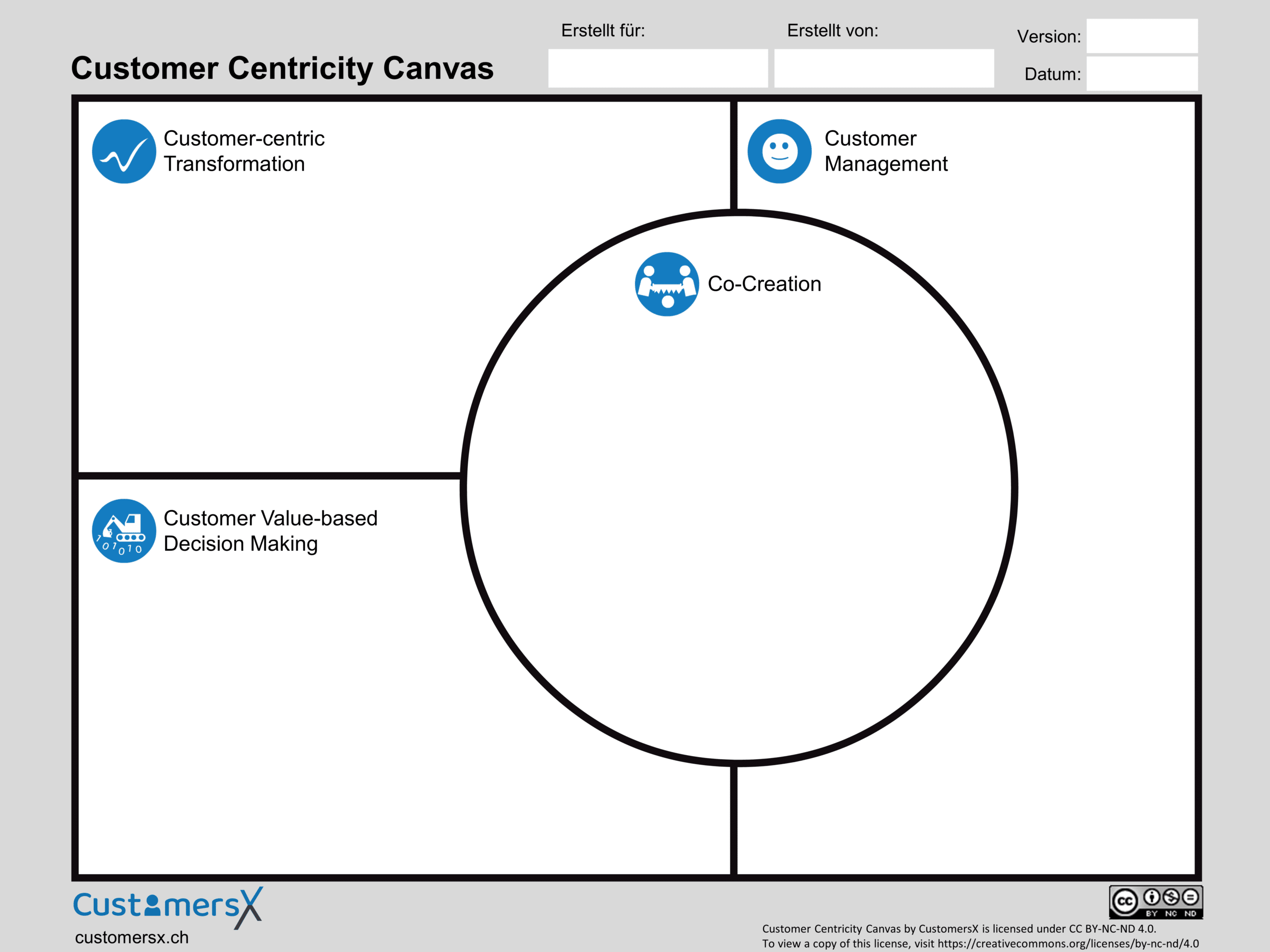Customer centricity is not to be understood as a state, but as a continuous improvement process. Improving customer orientation sounds good, but it is challenging for many companies. It turns out that the term is often not properly understood. At first glance (and on LinkedIn), what customer focus is not can seemingly be answered simply. That’s why we developed the Customer Centricity Canvas , so that a company can develop a uniform understanding of what customer centricity actually is and what it is not.
The first step in improving customer centricity is to reduce the complexity of managing an organization for those responsible. At the same time, improving customer centricity on a day-to-day basis means something different for every company. For this purpose, the Customer Centricity Canvas and the Customer Centricity Maturity Check serve as a starting point. The Customer Maturity Check allows managers to systematically analyze the strengths and weaknesses of their own company’s customer orientation. In the process, the results of the different persons responsible can be compared and different assessments critically scrutinized. The “feelings” regarding the strength of a company’s customer centricity are quantified in clear figures. The results can then be transferred to the Customer Centricity Canvas and serve as a basis for discussion.
Also, the Maturity Check helps to uncover beliefs that may have previously hindered the improvement of customer centricity. As mentioned before, improving customer centricity sounds simple, but it is a big challenge for any company, as it is a continuous process.
After listing the strengths and weaknesses, the second step is to prioritize them. Here, too, the Canvas can help to keep an overview of the existing weaknesses. Prioritization is extremely subjective, but we have seen in many companies that the lack of an overview of existing weaknesses in terms of customer centricity was a much bigger problem for successful improvement.
Improving customer centricity is usually achieved by defining a lighthouse project which, on the one hand, eliminates a central weakness in terms of customer centricity and, on the other hand, can be implemented in a short period of time. Thus, the third step is to define such a lighthouse, which serves as an entry point for improving customer centricity. Although the term “lighthouse” has become very familiar in practice, the idea behind it is elementary for improving customer centricity. Possible resistance can best be met with a successful project.
In a further step, the Customer Centricity Canvas also helps to secure the learning or the competence gain in the company. By prioritizing strengths and weaknesses, it is possible to determine exactly which competencies the company needs to improve in the coming years. Thus, the mistake of equating customer centricity with customer experience management can be avoided. Before customer management is changed, the necessary competencies should first be in place within the company. Especially in recent years, more and more companies are being managed by agencies instead of systematically improving their own competencies.
The reduction of those responsible to individual aspects of customer centricity is to be stopped with the approach described. As a result, the company should be put in a position to leverage success potential and work in a focused manner on the really important adjusting screws. Improving customer centricity also means learning.
Below you will find the most important sources on the topic of customer centricity:




